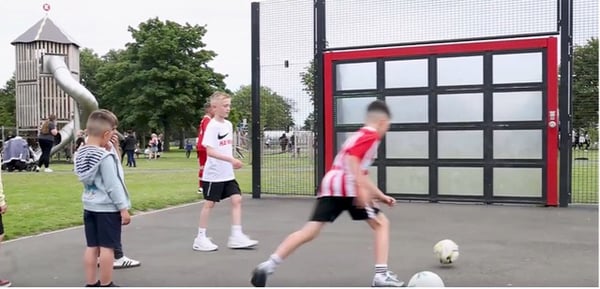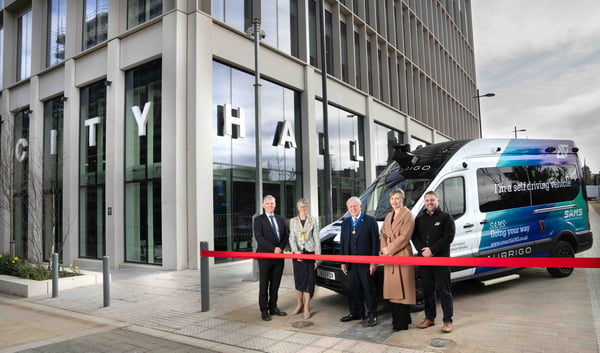The trends and ideas shaping smart cities - part two
The second part of our deep dive into the trends and ideas shaping smart cities shows how the concept is evolving to become more of a mindset than a desired state. A growing emphasis is also being placed on connected places as public services increasingly will work together, sharing systems and data to help build ‘whole system’ responses to citizen’s needs.
Smart means joined up - Wojas Witek, Digital and Smart Cities Lead at Barnet Council
“If we’re going to be using the label ‘smart’ we need to be thinking about how our data and digital infrastructure is joined up,” says Witek Wojas, Digital and Smart Cities Lead at Barnet Council.
He emphasises the need for smart cities to deliver whole systems that layer outcomes. “All too often a service area in a council will deliver a particular technology project without thinking about how this can be useful for others. Smart is not about doing things in isolation, like deploying a sensor and extracting data; every project should be layered with multiple, transformative outcomes.”
service area in a council will deliver a particular technology project without thinking about how this can be useful for others. Smart is not about doing things in isolation, like deploying a sensor and extracting data; every project should be layered with multiple, transformative outcomes.”
An upcoming pilot will see Barnet’s waste collection vehicles, which visit every street in the borough on a regular basis, capture additional data, such as street defects, highway maintenance or fly tipping. “Delivering projects like this means we're bringing different council service areas into a room together, so everyone’s a stakeholder and we’re all joined up,” Wojas says.
“A lot of smart city vendors are too focused on the product or the technology and not enough on delivering outcomes… it’s all about the business case, everyone struggles with that.”
Moving mindsets - David Wilkins, Head of Smart City at Westminster City Council
“The term smart city has become quite ambiguous” says David Wilkins, Head of Smart City at Westminster City Council. “It’s sometimes just seen as a cost centre; an outward flow of money rather than value. We're redefining it to be more of an approach; finding new ways of working to deliver value.”
 For Westminster City Council, this involves moving away from traditional project management to a more outcomes-driven mindset “where you deliver value quickly and incrementally, often engaging with users,” Wilkins explains. “For example we have a whole product line fixed on the environment with individual products underneath that, which align to that wider objective around air quality.”
For Westminster City Council, this involves moving away from traditional project management to a more outcomes-driven mindset “where you deliver value quickly and incrementally, often engaging with users,” Wilkins explains. “For example we have a whole product line fixed on the environment with individual products underneath that, which align to that wider objective around air quality.”
Another product line is optimising user experience. A smart city is one that engages with its citizens or even better – predicts what their citizens want. By using chatbots and image AI, Westminster City Council have reduced the time it takes citizens to report a problem from 10 minutes to under a minute, but the ultimate goal is to fix a problem before it's been reported, Wilkins says.
An early concept involves using sensors to monitor noise levels at construction sites and alerting workers via real-time data if it gets too loud - preventing the usual stream of complaints. In theory, the same concept can be applied to other common problem areas like potholes and fly tipping. The wider success of this model, Wilkins argues, depends on that shift in mindset. “Instead of every service developing their own product, we want to begin looking more horizontally across the organisation and build out capabilities.”
Breaking out of traditional silos, however, is as much a cultural challenge as it is a technical one. “One approach is to align people against a broader goal. Climate is a good example – everyone is clear on Westminster’s Net Zero by 2030 target, which spreads responsibility and coordinates activity around that shared end-goal.”
Data is the new gold - Matthew Wallbridge, Chief Digital and Information Officer at the London Borough of Hillingdon
“Data is the new gold, and despite the over-focus on AI, the project I am most excited about is designing and deploying an analytics platform which is scalable,” says Matthew Wallbridge, Chief Digital and Information Officer at the London Borough of Hillingdon. “By using matched data, it produces a golden customer record, bringing together data from multiple council services and data from across the public sector and the place.”
This, coupled with a renewed focus on data governance and quality, will lead to improved decisions based on enhancing the evidence of them – as well as accelerating the Borough’s journey on AI.
Another trend sees the Internet of Things moving into the mainstream when it comes to shaping places in the public sector. Wallbridge says that past learnings have seen confidence grow, especially in areas like transport and climate change, “and now there is a move to embed this in homes, from devices that detect damp and mould to non-intrusively monitoring the behaviour of vulnerable people”. He adds, however, that “places are about people, not technology, and people helping to shape the services in their area is the future.”
Community resilience - Liz St Louis, Director of Smart Cities at Sunderland City Council
IoT integration, the rollout of 5G networks and data analytics will continue to play a significant role in smarter, more connected cities, says Liz St Louis, Director of Smart Cities at Sunderland City Council. A growing emphasis is also being placed on community resilience, harnessing digital and technology to protect residents from a growing range of threats and issues.
"Smart cities continue to place a strong emphasis on sustainability as they .jpg?width=250&height=250&name=Liz%20St%20Louis%20(1).jpg) strive to reduce their carbon footprint and operate in more effective and efficient ways," St Louis says. Initiatives such as renewable energy, waste management optimisation and the development of eco-friendly infrastructure to reduce environmental impact. Smart transportation systems, too, including electric vehicles, bike-sharing programmes and intelligent traffic management are transforming urban mobility, St Louis explains.
strive to reduce their carbon footprint and operate in more effective and efficient ways," St Louis says. Initiatives such as renewable energy, waste management optimisation and the development of eco-friendly infrastructure to reduce environmental impact. Smart transportation systems, too, including electric vehicles, bike-sharing programmes and intelligent traffic management are transforming urban mobility, St Louis explains.
“My primary focus for this past year has been to establish a comprehensive and interconnected smart city framework that enhances urban living, sustainability and overall wellbeing for residents across the city. Working in close partnership with Boldyn Networks, we have prioritised the deployment of next generation digital infrastructure and smart technologies - this network of networks is enabling us to develop at a pace, and create one of the world’ most advanced smart cities.”
This coming year is all about maximising the impact of these networks, St Louis adds, “delivering a plethora of use cases to profoundly transform the experience for all who live, work and play in the city.”






